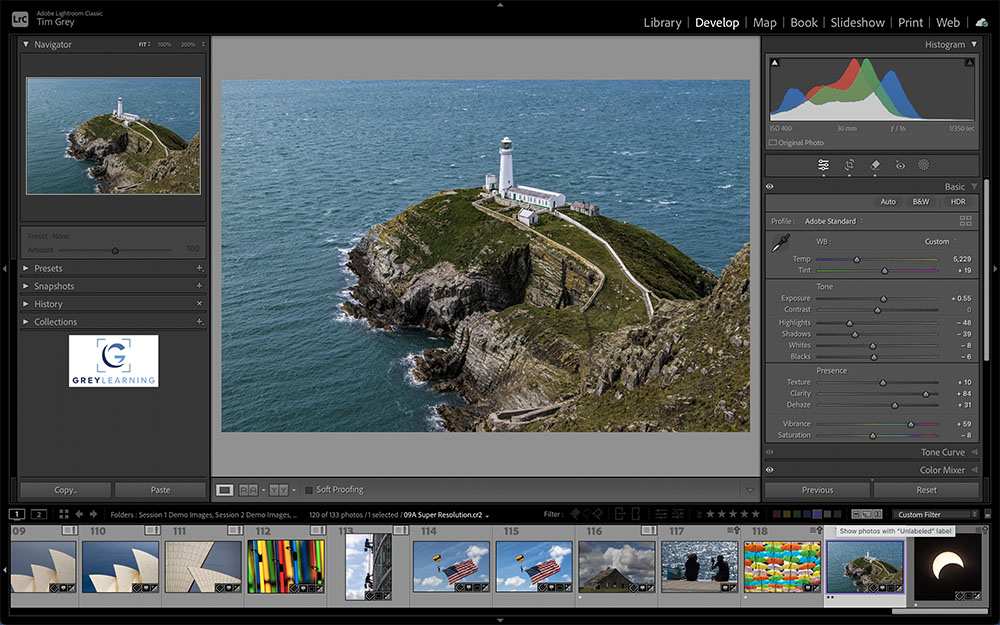Today’s Question: I have many older images stored as small JPEGs and would like to make some 8×12 prints. I thought that Enhance Detail (in Camera Raw or Lightroom Classic) coupled with upscaling the image in Photoshop (resampling using Preserve Details) would be called for. Does it matter in which order they are used? Are both even necessary?
Tim’s Quick Answer: The Raw Detail option for Enhance is only available for raw captures, not JPEGs. The Super Resolution feature of Enhance is available for JPEG images, but in this case I recommend resampling in Photoshop and possibly first using the option to remove JPEG artifacts using the Reduce Noise filter.
More Detail: While the Enhance feature in Camera Raw and Lightroom Classic represent some potentially helpful features, they are mostly focused on raw captures, and I’ve gotten mixed results with their use. If you did want to make use of the Enhance features for a raw capture I would recommend making that the first step of the workflow.
Since the images in this case are JPEG files, they will probably benefit from using the “Remove JPEG Artifact” option for the Reduce Noise filter. The filter can be applied by choosing Filter > Noise > Reduce Noise from the menu. Turn on the “Remove JPEG Artifact” checkbox to enable this feature. You can also use the Strength and Reduce Color Noise sliders as needed to reduce noise, though this is not required. You can also use the Sharpen Details slider to help enhance detail in the image, though you could also simply apply sharpening as a later step instead.
Instead of using the Super Resolution feature in Enhance, I suggest enlarging the images using the Image Size command (Image > Image Size from the menu) in Photoshop. Make sure the Resample checkbox is turned on, and then you can select ” Preserve Details 2.0″ from the popup to the right. Set the output dimensions for the print and click the OK button to resize the image.
At that point you can apply final sharpening for the print, and then save the image in a file format such as TIFF to preserve the highest quality for the image with the updates you’ve applied.



